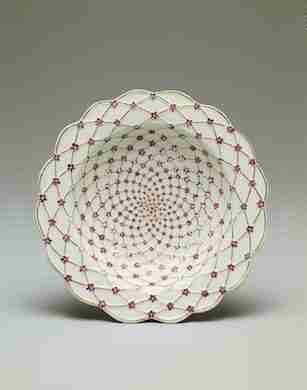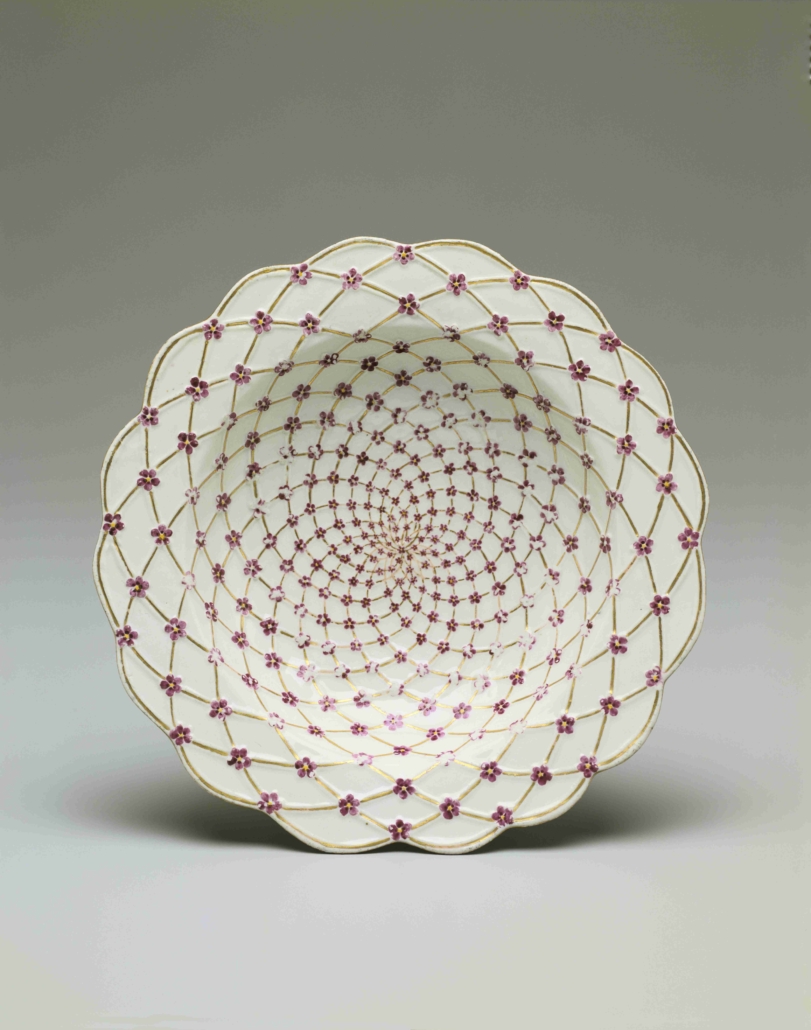
WASHINGTON — The opulence and invention that characterized the evolution of hard-paste porcelain are explored in the special exhibition The Luxury of Clay: Porcelain Past and Present, on view this year at Hillwood Estate, Museum & Gardens from February 19 through June 26. With more than 125 objects, ranging from 18th-century Meissen, Du Paquier, KPM, and the Imperial Porcelain Factory to contemporary objects that reimagine the enduring art form today, The Luxury of Clay will explore how the important discovery of so-called “true porcelain” in Europe ignited centuries of innovation and creativity.
The Luxury of Clay will be the first exhibition at Hillwood to explore and present the full range of hard-paste porcelain production represented in its collection, including new acquisitions exhibited for the first time, looking beyond the French and Russian services for which it is best-known to highlight the earliest European innovators and the adoption of new technologies in porcelain across the centuries. It will include additional pieces of Meissen and Du Paquier porcelain on loan from the collections of Hans Syz and Alfred Duane Pell conserved at the National Museum of American History in Washington, D.C., where they have not been exhibited since the 1960s, and select loans from The Frick Collection and other private collections in New York and Washington in order to fully examine the evolution of true porcelain.
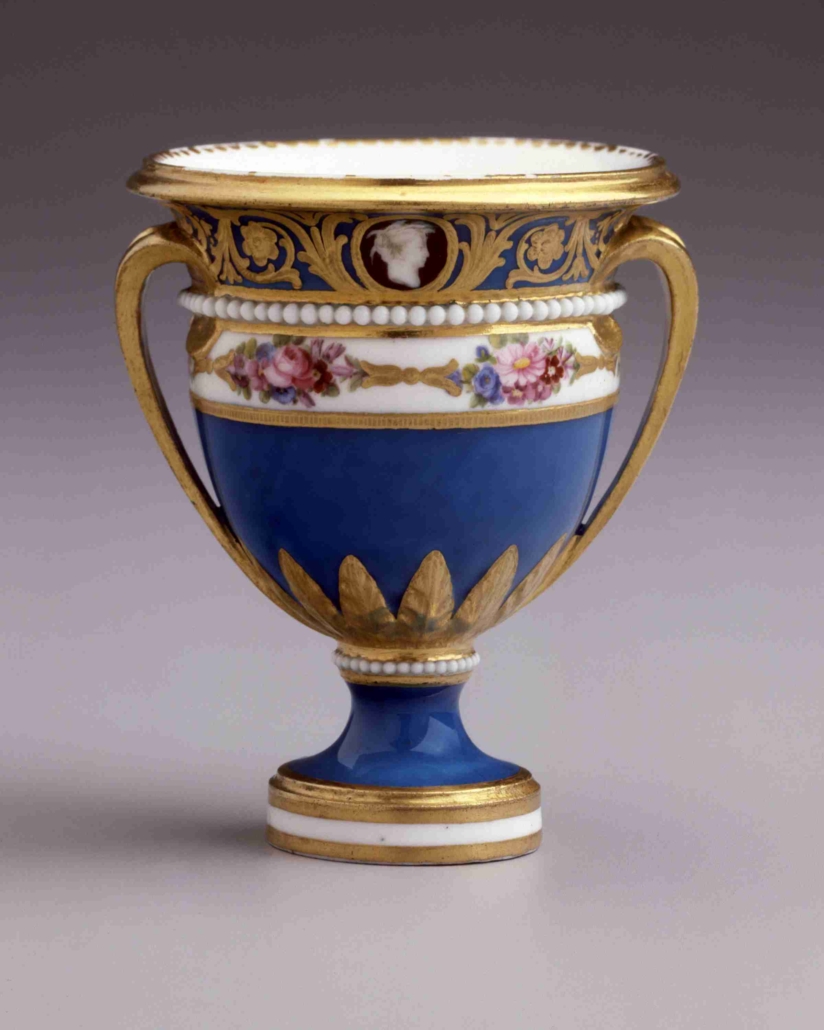
“Hillwood’s renowned porcelain collection reflects founder Marjorie Merriweather Post’s taste for beautifully crafted items, of exquisite design, and with historic associations, and includes examples ranging from the early years of the royal porcelain factory at Vincennes — later known as Sevres — to a grand selection of 18th-century European pieces,” explained Hillwood executive director, Kate Markert. “This is the first porcelain exhibition at Hillwood to examine the full scope of Marjorie Post’s passion for the material, including hard-paste, while placing these historic pieces in dialog with contemporary creative porcelain inventions.”
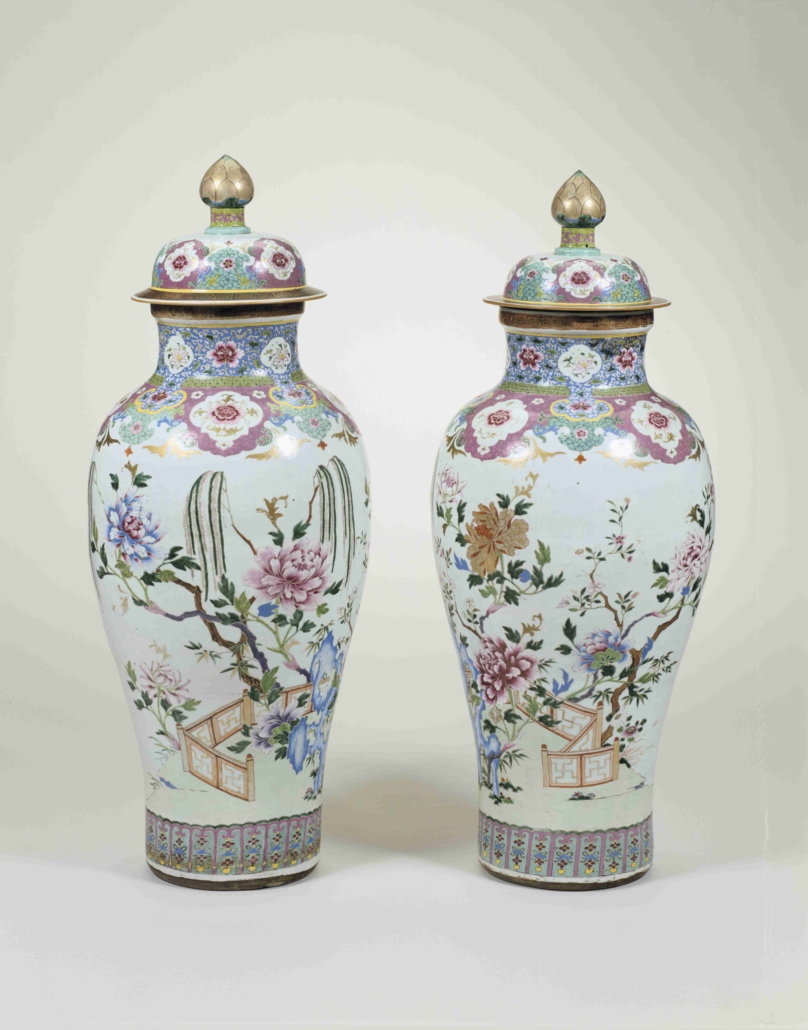
Examples of contemporary ceramics, including pieces by Bouke de Vries, Chris Antemann, Cindy Sherman and Roberto Lugo, will demonstrate the historic inspiration of Chinese, German, and French porcelain on artists today.
History
Often referred to as “white gold” due to its natural color and high value, porcelain was originally produced in China in the 7th century. The exportation to Europe by the Portuguese and Dutch in the 16th century created a vast demand for these goods, heretofore unknown outside of Asia. The recipe for porcelain remained a mystery in Europe until the early 18th century, when the Meissen Manufactory in Saxony discovered the essential ingredient, kaolin, a soft white clay. From there, the secret traveled throughout Europe, to Vienna in 1718 under Claudius du Paquier and nationalized in 1744 by Empress Maria Theresa; to Saint Petersburg, Russia, in 1744 at the Imperial Porcelain Manufactory following Peter the Great’s visit to Saxony; to Berlin in 1763 at the Royal Porcelain Manufactory (KPM); and finally to France, at Sevres in the late 1760s.
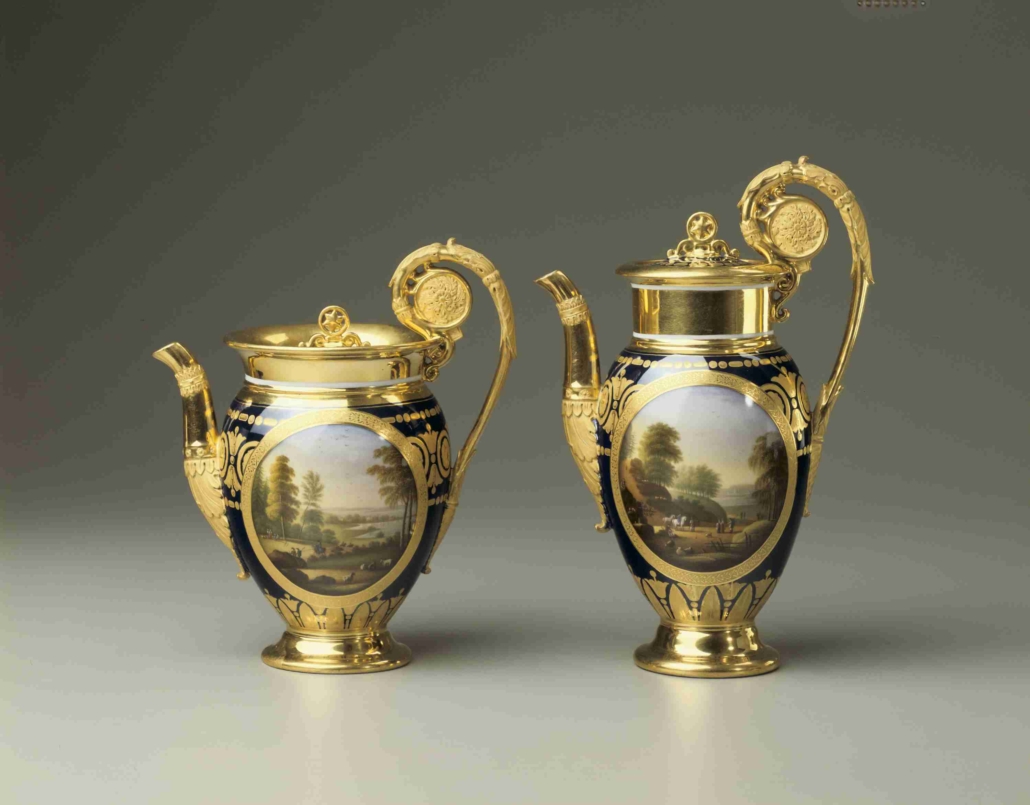
With each new discovery came innovative colors, styles, and shapes, distinguishing factories from one another as each developed specialties. Moving chronologically through time, the exhibition will demonstrate how the discovery of this material in Europe shaped the luxury market and how the porcelain craze left a lasting impact on the art world.
“Though seemingly ubiquitous today, porcelain was initially a rare and highly prized material,” said Dr. Rebecca Tilles, associate curator of 18th-century French and Western European fine and decorative arts and curator of the exhibition. “Its story is one of mystery and intrigue, and we are excited to use the beautiful pieces within Hillwood’s collection to trace its origins and eventual expansion westward. From functional pieces and decorative objects to fine art and tableware, porcelain has been continually reinvented and played an important role in history.”
Porcelain at Hillwood
Marjorie Merriweather Post had an eye for beauty and a taste for exquisitely crafted objects when creating her collection. Beginning with Sevres soft-paste porcelain, which she purchased from the 1920s through the 1960s, Post established herself as a cultivated and discerning collector of porcelain. She later turned her attention to the collections of the Habsburg court and then to Russian porcelain services, particularly diplomatic gifts and international commissions between Western European and Russian factories, during her time in the Soviet Union (1937-38). At Hillwood, Post built the French and Russian porcelain rooms to house these treasures, displayed in special cases for all to see. Though Hillwood’s renowned collection of Sevres was previously explored in the 2009 exhibition Sevres: Then and Now, this is the first exhibition at Hillwood to investigate the full scope of her porcelain holdings.
Contemporary Displays
The historical objects will be complemented by a selection of modern-day examples. Drawing inspiration from examples from China, Germany, France, and more, contemporary artists such as Bouke de Vries and Cindy Sherman have continued the tradition of using porcelain to create beautiful works of art, and their pieces will appear throughout the exhibition in the dacha.
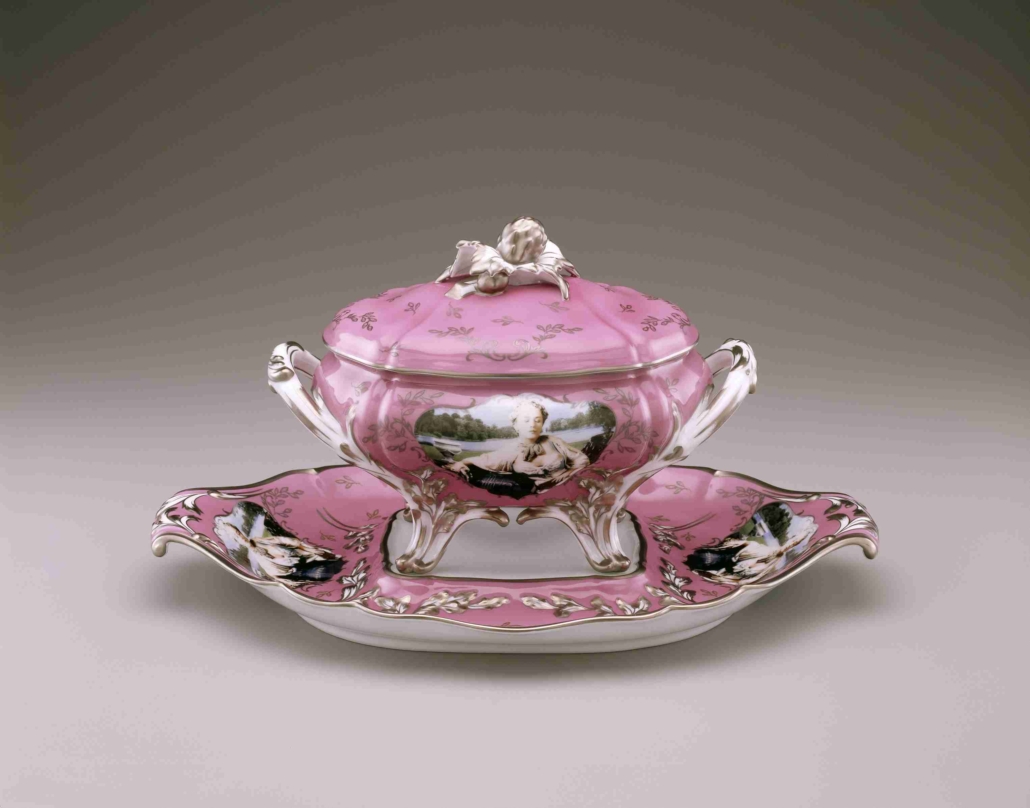
Special commissions created by Chris Antemann and Robert Lugo will extend the exploration into the mansion. Antemann’s two porcelain surtouts de table, entitled An Occasion to Gather: Dining in the French Parterre and A Stage for Dessert, inspired by Hillwood’s collection of French and Russian porcelain, the garden sculpture and landscape design in the French parterre, and 18th-century dining culture, will be on display in the dining and breakfast rooms. A selection of work by Lugo, incorporating themes of visual and popular culture, politics, and social justice, will be interspersed with objects from Hillwood’s collection throughout the first floor.
Visit the website of the Hillwood Estate, Museum and Garden and see its dedicated page for The Luxury of Clay: Porcelain Past and Present.


